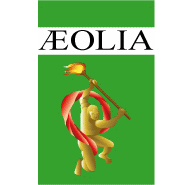By Barrett J. Brunsman and Rebecca Billman
The Cincinnati Enquirer And in the Veneto, we sampled the best of one of Italy’s smaller labels, the Costozza wines of Count Alvise da Schio and his son, Count Giulio da Schio. Secrets of Costozza’s caves The village of Costozza lies at the base of Monte Brosimo. This 1,312-foot hill is part of the Colli Berici, a mountain range of volcanic origin. Both the soil and mild climate are ideal for growing grapes. Costozza has been documented as a winemaking center since at least 1250, but archaeological excavations indicate it’s possible that wine was being made in the Berici Hills thousands of years earlier. Off the track of foreign tourists, Costozza is 7 miles south of Vicenza by way of Superstrada 247. This narrow road winds past farm fields along a stream called the Riviera Berica. The village of 2,000 has a delightful old restaurant, Taverna Aeolia. Astronomer Galileo Galilei mentioned in his memoirs that he was a guest there 400 years ago. Today, the area is popular among Italians who enjoy mountain bicycling or hiking, as well as rock climbing or horseback riding. What we found fascinating is that, for thousands of years, this pretty yet unassuming village has been of great strategic importance. Costozza is a derivation of “Custodia,” the name given by the Romans. That was a reference to slaves kept here “in custody.” Their job was to quarry limestone from caves inside Monte Brosimo — to be used for villas, theaters and monuments. The quarries outlasted the Roman Empire. In the 1500s, Andrea Palladio, one of the most influential architects of the Renaissance, used Costozza limestone to build some of Italy’s most impressive villas. Inside the caverns, called covoli, the temperature doesn’t drop below 43 degrees in winter and doesn’t rise above 59 in summer. An Etruscan mark above the entrance to one of the caves indicates that more than 2,500 years ago people were making use of this natural refrigeration to store food. Today, some of the caverns house oak barrels in which the da Schio family ages Costozza-brand wine. The earliest written record of wine being stored in the caves dates to 670 years ago. With a telephone call in advance, it’s possible for groups to visit the covoli cellars and sample Costozza wines. The cost of $7.32 per person includes a tour of the da Schio family’s Renaissance garden, which features statues carved from the local limestone hundreds of years ago. But one section of the vast caverns has been off limits since the 1950s. That’s when the Italian government appropriated the mountaintop and three-fourths of the covoli, then turned them over to the U.S. military. Barrels of da Schio wine gave way to surface-to-air missiles. We were told these were Nike-Hercules missiles. The Hercules version of the Nike missile can carry either conventional or nuclear warheads. Named for the winged goddess of victory, Nike missiles travel at more than three times the speed of sound — in excess of 2,700 mph. Such missiles were stored underground on rails and could be brought to the surface via elevators for launch. With a range of more than 75 miles, they were designed to intercept Soviet planes carrying nuclear bombs. In theory, a single Nike tipped with a nuclear warhead could wipe out an entire formation of enemy planes. Today, we were told, the military base is merely a logistics center. After learning the secrets of the Costozza caves, we agreed we could use a glass of wine. Fortunately, if you want to sample a glass of the da Schio family’s best — or buy a bottle — no appointment is necessary. Just step into the family wine bar, La Botte del Covolo, which translates as the Barrel of the Caves. It’s at the foot of Monte Brosimo, on the public square named for a da Schio ancestor. The bar, which opened in 1970, was the village icehouse until about 1920. Built in the 1800s from the covoli limestone, it consists of a round room with a conical ceiling. Snow used to be shoveled in from the top. Now, the high ceiling helps funnel away cigarette smoke. When we visited, neither the bartender nor the dozen patrons spoke English. So we resorted to our Italian phrase book: Due bicchieri di vino locale — da Schio rosso, per favore. Translation: “Two glasses of the local wine — da Schio red, please.” Price per glass: 73 cents. We had to guess at what vintage we were being served, as it was poured from a decanter. It turned out to be Colli Berici Cabernet Franc, a warm, robust red. Later, we treated ourselves to the 2000 vintage of cabernet sauvignon, the most expensive da Schio wine at $9.18 a bottle. The da Schios have been making wine in Costozza since 1812. That’s when they inherited the covoli of Monte Brosimo, as well as the surrounding vineyards. These had been owned by a cousin, who was the last of the wealthy Trento family. In the late 1800s, the da Schios reinvigorated the Costozza vineyards, which were at least seven centuries old, by planting cabernet and other vines imported from France. Sauvignon blanc and pinot nero are the other wines the family produces. All are made according to the classical methods, using grapes grown on the property. Vineyards account for 27 acres of the family’s 198-acre estate. Production is limited to 15,000 bottles a year. Two-thirds of that is either cabernet franc or cabernet sauvignon, of which Count Giulio da Schio, who runs the family business, is most proud.
Feb 12
0 Comments
